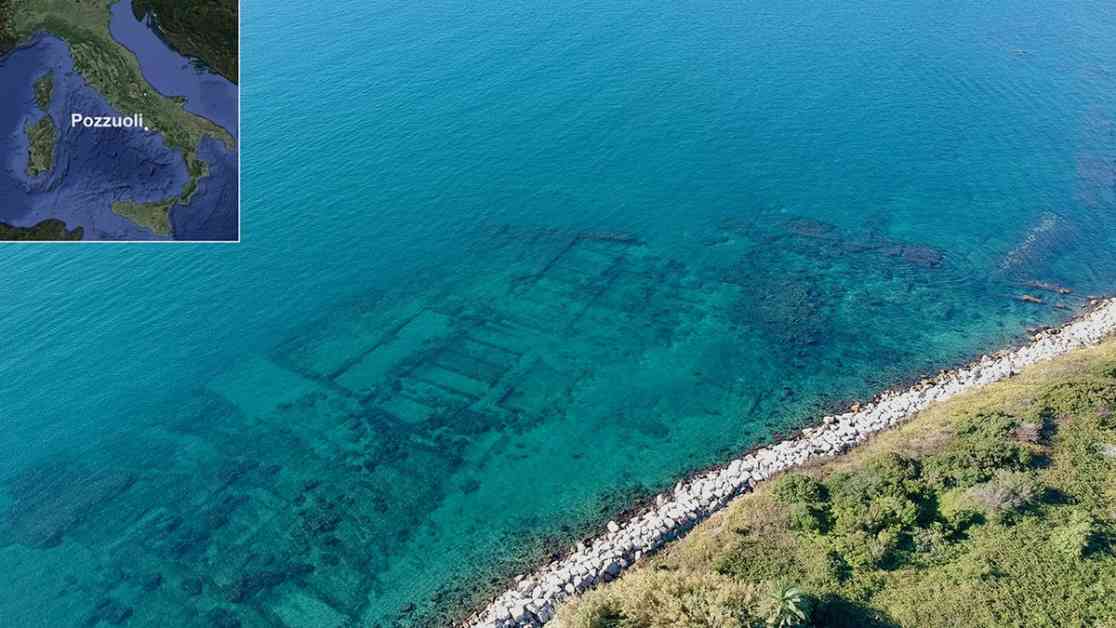Archaeologists have recently made a fascinating discovery along the Italian coast near Naples. The remains of an ancient temple, believed to be around 2,000 years old, have been found submerged in the waters off the coast of Pozzuoli. This temple is thought to have been built by immigrants from Nabataea, an ancient kingdom located on the Arabian Peninsula.
The discovery of altars and inscribed marble slabs has shed light on the history of this ancient temple. The artifacts suggest that the temple was dedicated to Dushara, the main god in the ancient Nabataean religion. What makes this discovery even more intriguing is that the temple exhibits a mix of Nabataean religious practices and Roman architecture, as evidenced by the Latin inscriptions found on the marble slabs.
The presence of this temple in Pozzuoli is not entirely surprising, given the city’s historical significance as a major harbor for trade during Roman times. It is believed that the Nabataeans, known for their control over a vast trade network of luxury goods, were drawn to Puteoli due to its strategic location as a hub for maritime trade. However, the temple’s burial in the second century A.D. with a mix of concrete and broken pottery suggests a shift in the region’s dynamics, possibly due to changes in trade routes or political circumstances.
The discovery of this ancient temple provides valuable insights into the interactions between different cultures and religious practices in the ancient world. It also highlights the impact of historical events, such as the annexation of Nabataea into the Roman Empire, on local communities and religious traditions. This archaeological find adds to our understanding of the complexities of ancient societies and the ways in which they adapted to changing political and economic landscapes.
Overall, the discovery of the submerged temple in Pozzuoli is a significant contribution to our knowledge of the ancient world and underscores the importance of ongoing archaeological research in uncovering the mysteries of the past. As more artifacts and structures are uncovered and studied, we are able to piece together a more comprehensive picture of the diverse cultures and civilizations that once thrived in this region.










